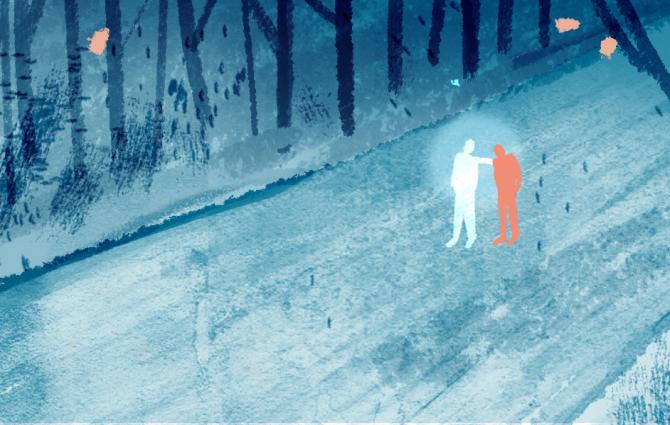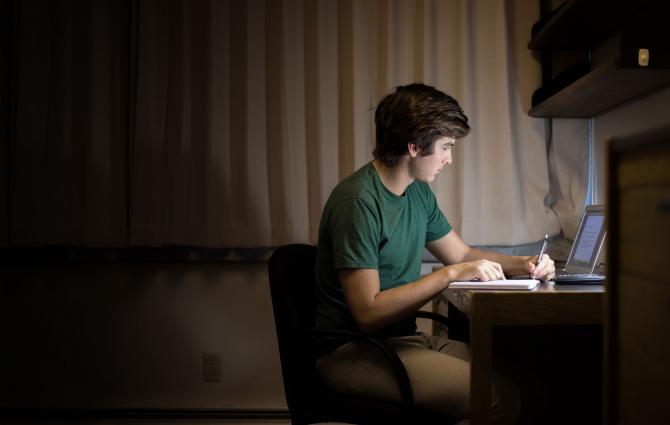In challenging times, the past has a lot to teach us.
I’m a bit of a history buff in general, and I always find it enlightening to think about how all the people who came before us braved some pretty tough odds and some massive societal changes.
Our perception of history is often filtered through the actions of politicians and generals and other extremely powerful people, but I’m most impressed by normal people, like my grandparents—they endured the Great Depression, World War II, and the Cold War, and then had to figure out how to use the internet and cell phones (my grandma is an avid Instagrammer). That’s amazing.
Two of my grandparents actually went to UBC in the years following World War II. They’re among the thousands of students, staff, and faculty who persevered through a lot of change and tumult and left their mark on the University and the world.
A changing world, a changing campus
As you might expect, UBC—both the campus and the community—has grown a lot since my grandparents were here, prevailing through extremely challenging situations.
The following examples show how UBC’s campus has changed over the years and also how it’s possible to overcome difficult times:
1925: Main Library opens after students advocate for a new campus
UBC was founded in 1915, but World War I and its aftermath stalled the construction of the Point Grey campus. Students had to learn in what they coined the “Fairview shacks,” located in Vancouver’s Fairview neighbourhood. These simple buildings were inadequate in fulfilling the needs of the new university.

Taking matters into their own hands, some of these students collected more than 50,000 signatures to demand that the government continue construction of the campus. In October of 1922, they marched from downtown Vancouver to the site of the Point Grey campus and sat in at the unfinished Science (later Chemistry) Building. This protest would eventually come to be known as the Great Trek, a pivotal moment of courage without which UBC as we know it might not even exist.

Their efforts were successful, and construction at Point Grey resumed soon afterwards. When campus finally opened in 1925, it was the culmination of years of students’ hard work and advocacy.
The Ubyssey framed their opinion of the recently opened Main Library (which later became the Irving K. Barber Learning Centre we know today) very eloquently in a September 1925 issue:
"To those of us who began our academic careers in the catacombs at Fairview, the sudden accession to a wealth of light and beauty is positively bewildering. We are dazed with the appearance of architectural cleanliness and bewildered by our lineal freedom."
The original UBC students who advocated for a real campus to be built never gave up—they’re a good reminder of how much it means to keep fighting for what we believe in, even when it seems difficult!
See how Main Library evolved from its humble beginnings into the sprawling Irving K. Barber Learning Centre by swiping through the Instagram post below:
1940: Brock Hall opens after UBC makes it through the Great Depression
Today, Brock Hall is the home of Student Services, but it was actually the original Student Union Building on campus from its opening in 1940 until 1967.
That Brock Hall ever opened at all is a bit of a miracle. During the Great Depression of the 1930s, widespread budget cuts threatened to close UBC permanently.

To gain more funding, UBC adapted the best they could to the times (just like we’re doing today!), and started offering vocational and professional development courses to British Columbians unable to afford education.
Despite the difficulties of the Depression, UBC students kept their spirits up by selling hot dogs and organizing lunchtime dances to fundraise for a new stadium!

Their proactiveness in adapting and determination to make the most of their years at university is a good reminder to stay motivated and positive, even in stressful times.
Take a look at the following Instagram post to see how Brock Hall flourished after UBC made it through the Depression:
1940s: World War II expands the idea of UBC
World War II impacted UBC in so many ways, not the least of which was the thousands of war veterans who enrolled in courses following their service (incidentally, this cohort included my grandfather, who liked to recall attending class in temporary military huts).

Although UBC had been a small university primarily focused on agriculture before the war, the conflict spurred UBC researchers to shift their focus to technology, particularly chemistry and electrical engineering.
This influence is still felt today—researchers at UBC were the first to sequence the SARS genome, have formulated groundbreaking HIV/AIDS treatments, and recently grew perfect human blood vessels in a petri dish! There’s also incredible research being done on COVID-19 at UBC, helping us get closer every day to finding an effective treatment.
Click through the following images to see how far scientific research at UBC has come in the past century:
UBC students like my grandparents lived through some pretty extraordinary times. They showed me that, though a lot will change in our lifetime, we can change too, and keep striving to be the best we can be.
What the past can teach us
Though it’s true we can learn a lot from the past and find it inspiring, I think it’s important not to romanticize the people who lived through it as being somehow braver or stronger than we are. They were both brave and strong, but they also felt afraid, uncertain, and overwhelmed, just like we do.
The photo below is of students taking exams back in 1959. Look at how dressed up everyone is! Blazers, ties, immaculately coiffed hair—I can honestly say I've never seen an exam hall look like this. These students were probably just as nervous before a final as we are, but I wonder if putting on some snazzy threads made them feel more confident?
Though you don't need to put on your finest clothes before your next Zoom class, there's a lot to learn from the past. It can serve as a warning not to repeat the same mistakes, but also as an inspiration to push on ahead, despite trying times.



